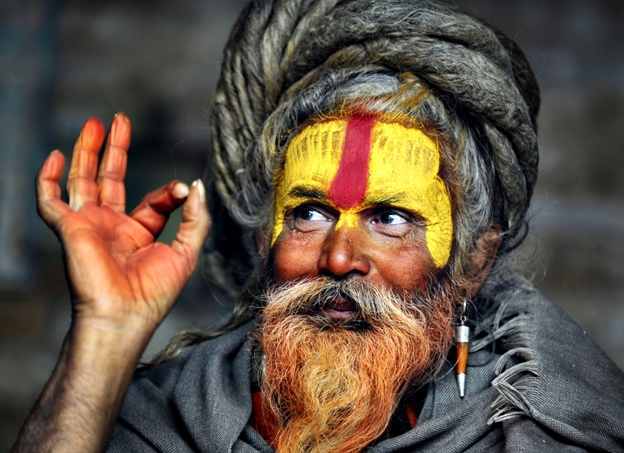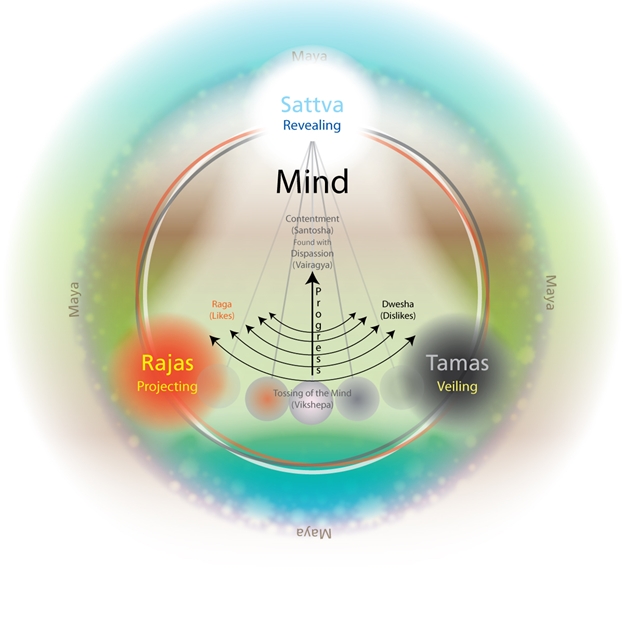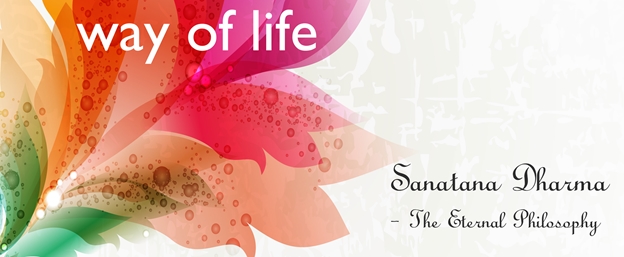The common belief among Hindus in India that one is born into a certain caste is not only flawed but is also not supported by any of the scriptures. The caste system in India has degenerated into a system falsely recognizing men born in Brahmin families as Brahmins even though they do not exhibit any qualities of a Brahmin, who are generally the intellectuals whose duty in life is to seek and share knowledge without taking rewards for it.
The current caste system widely followed in India is not only corrupt but is also against all the scriptures which propose a Varna Shastra system as described in Sanatana Dharma or Dharmic Philosophies (I use Sanatana Dharma and Hinduism interchangeably here, please check this out to read more on Sanatana Dharma).
In Gita (4.13) Lord Krishna says;
cātur-varṇyaṁ mayā sṛṣṭaṁ
guṇa-karma-vibhāgaśaḥ
tasya kartāram api māṁ
viddhy akartāram avyayam
Translation: “According to the three modes of material nature and the work associated with them, the four divisions [Brahmins, Kshatriyas, Vaisyas, Sudras – later on we will see what these four divisions mean] of human society are created by Me. And although I am the creator of this system, you should know that I am yet the non-doer, being unchangeable.”
Word to Word meaning for the curious ones:
cātuḥ-varṇyam — the four divisions of human society; mayā — by Me; sṛṣṭam — created; guṇa — of quality; karma — and work; vibhāgaśaḥ — in terms of division; tasya — of that; kartāram — the father; api — although; mām — Me; viddhi — you may know; akartāram — as the non-doer; avyayam — unchangeable.
Lord Krishna in Gita as well as other Hinduism / Sanatana Dharma scriptures clearly describe that the Four Varnas are based on one’s Guna (quality & nature of a person) and Karma (deeds) but it is absolutely not based on the Janma (birth). If a person is born in a Brahmin family, but has the qualities of a Sudra, he is to be considered as a Sudra. Merely becoming a son of a Brahmin father will not make anyone a Brahmin.
The Vedas, set of scriptures of Hinduism, recognize that different people have different skills and qualifications and it has nothing to do with birth alone. One born of a Sudra [worker] parents, with his qualities [guna] and work [karma] as a Brahmin (someone who is knowledgeable), can indeed become a Brahmin. In the same way if the son of a Brahmin doesn’t have the qualities of a Brahmin or work as a Brahmin then he is not a Brahmin. There are numerous examples of this in the Vedas, for example, Valmiki, Veda Vyasa, Kabir, even Lord Krishna himself.
By taking a close look at Varna Shastra system, one would realize that this system is not unique to India, but it appears in every cultures. We have intellectuals [Brahmins], we have administrators and military men [Kshatriyas], we have businessmen and farmers [Vaisyas] and we have workers (Sudras) in every societies. The Vedic system recognizes these groups and subscribes various ways to strive in their own areas as to attain liberation – to realize the ultimate truth – which is the ultimate aim of human life.
Scriptures also say that Varna system is eternal. If we look around, we can mainly see four types of people and four types of work, similar to what is explained in Varna System. It does not change over time, not only in India but anywhere in the world. We can find these four types of men and four types of work in every society.
What are the Four Varnas According to Varna Shastra?
Manusmriti (also known as Manava Dharma Shastra – download a copy from here) written by Sage Manu with the assistance of Maharishi Bhrigu, one of the Saptarishis (seven great rishis / sages) who is considered to be the facilitator of early Creations, describes the Four Varnas clearly and their duties.
In the verse 1.31, Sage Manu introduces the Four Varnas by saying, “But for the sake of the prosperity of the worlds He [the God] caused the Brahmana, the Kshatriya, the Vaisya, and the Sudra to proceed from His mouth, His arms, His thighs, and His feet.”.
In verse 1.87, he talks about how these four varnas are created by saying, “But in order to protect this universe He [the God], the most resplendent one, assigned separate (duties and) occupations to those who sprang from his mouth [Brahmana], arms [Kshatriya], thighs [Vaisya], and feet [Sudra].”
And in the following verses, he talks more about each varnas. In verse 1.88, “To Brahmanas he assigned teaching and studying (the Veda), sacrificing for their own benefit and for others, giving and accepting (of alms).”
In verse 1.89, “The Kshatriya he commanded to protect the people, to bestow gifts, to offer sacrifices, to study (the Veda), and to abstain from attaching himself to sensual pleasures…”
And in verse 1.90, “The Vaisya to tend cattle, to bestow gifts, to offer sacrifices, to study (the Veda), to trade, to lend money, and to cultivate land.”
And in verse 1.91, “One occupation only the lord prescribed to the Sudra, to serve meekly even these (other) three classes.”
Duties of Four Varnas
Reading these verses from Manusmriti further, we can define the duties of the four varnas as follows;
 The Brahmins are the saintly intellectuals who have studied the Vedas and whose position in society is to perform worship in the temple, study the scriptures, perform yajna and give advice to everyone, but particularly to the Kshatriyas since they being the ruling class. Brahmins do not accept salary for their work but they could accept some contributions / donations from the people they are giving advice to. They can also receive charity from anyone and they are also required to contribute money to good causes. They are advised to live a very simple life.
The Brahmins are the saintly intellectuals who have studied the Vedas and whose position in society is to perform worship in the temple, study the scriptures, perform yajna and give advice to everyone, but particularly to the Kshatriyas since they being the ruling class. Brahmins do not accept salary for their work but they could accept some contributions / donations from the people they are giving advice to. They can also receive charity from anyone and they are also required to contribute money to good causes. They are advised to live a very simple life.
The Kshatriyas are the ruling class, the administrators and leaders and military men. They are the actual leaders, like the Presidents and Prime Ministers of the countries. But they do not work independently, they take advice from the Brahmins. Kshatriyas can own land and become the king or proprietor of that land. Their duty is to protect the people and in return the people who occupy the land are required to give them taxes, which in turn becomes the income of Kshatriyas.
The Vaisyas are the productive class, the one who makes money, produce goods, and run businesses. Farmers and the businessmen are Vaisyas. They produce things and sell them to any other classes and make a living, thus supporting the society.
Sudras are the working class. They could work for any of the other three Varnas and take salary from them to make a living.
Further Evidences
In Gita, Lord Krishna says, (Gita 18.41), “Brāhmaṇas, Kshatriyas, vaiśyas and śūdras are distinguished by the qualities born of their own natures in accordance with the material modes, O chastiser of the enemy.” and He goes on to explain;

“Peacefulness, self-control, austerity, purity, tolerance, honesty, knowledge, wisdom and religiousness – these are the natural qualities by which the brāhmaṇas work.” (Gita 18.42).
“Heroism, power, determination, resourcefulness, courage in battle, generosity and leadership are the natural qualities of work for the Kshatriyas.” (Gita 18.43).
“Farming, cow protection and business are the natural work for the vaiśyas, and for the śūdras there are labor and service to others.” (Gita 18.44).
Current Caste System in India
However, if we were to look at the current Indian caste system, if one’s father is Brahmin, all his children are automatically Brahmins too, regardless of whether they’re doing anything that Brahmins were meant to be doing which is to mainly seek and share knowledge. It is like accepting the children of a doctor as doctors… It doesn’t make any sense. They have to be qualified in order for them to be able to become doctors… It may happen that someone born in a particular family will have the opportunity to develop the qualities of his parents and also work in the same way as their parents do. In such cases, the children may eventually be of the same varna (it is not Caste but Varna as explained earlier) as their parents . However, it is clearly not because one’s parents are of a particular varna, rather, the parents may have trained them to have the qualities and are doing the duties as such.
Examples of what Defines one’s Varna
The story of King Viswamitra is a beautiful example for how one can advance from one Varna to another by acquiring the necessary qualities. He was a Kshatriya king who took it as a challenge to become a Brahmin. Although he failed two times – one was when the Gods sent a celestial nymph named Menaka to lure him and break his severe penance to which he fell for and the other was when his own anger which depleted his yogic powers – eventually he succeeded and became not just a Brahmin, but a Brahmarshi – someone who has understood the highest meaning of Brahman – which is even higher than being just a Brahmin!
Another interesting story is from Jabala Upanishad about a young boy who approached Gautama Muni wishing to be his disciple. Gautama Muni asked the boy, “Who is your father?”, the boy said, “I do not know.” Guru asked him to ask his mother and find out who his father is…the boy asked his mother who his father was and the mother answered, “My dear son, I have known many men. I do not know who your father is.” The boy returned to Gautama Muni and relayed that message, “Guru, my mother also does not know who my father is. My mother says that she had sex with many men…” Gautama Muni concluded by saying, “I accept you as my disciple because of your honesty and thus proving that you’re Brahmin.” Honesty is boy’s Guna – his quality – that made him a Brahmin!
Another story is of Lord Krishna’s family itself. The father of Krishna, Vasudeva Maharaj was a Kshatriya King. However, the cousin brother, Nanda Baba was a Vaisya – a cowherd and a farmer. Although they have the same grandfather, both Vasudeva and Nanda Baba belonged to different Varnas – the former to a Royal Kshatriya and the latter to a working class, Vaisya.
The story of King Janaka is another one. He was a Kshatriya king who ruled Videha Kingdom from the capital of Mithila, which today is split into adjacent parts of both India and Nepal. He was a great king and also was well-versed in the Vedas. He thus became Rajarshi – a King and a Rishi, having the qualities of both Kshatriya and Brahmin (sages). He performed the duties of both Kshatriya and Brahmin or of a Sage / Rishi.
From all of those examples, it is clear that there is nothing stopping anyone from bettering their position according to Sanatana Dharmic philosophies. It is also important to note that, what we are now is the byproduct of our own past lives karmas. However, the scriptures do not force everyone to strive to be Brahmin in order to attain the ultimate goal of life, but only to follow their own work with dedication.
Final Notes
As Gita suggests in verse 3.8, “perform your prescribed duty, for doing so is better than not working. One cannot even maintain one’s physical body without work.” and in verse 3.19, “Therefore, without being attached to the fruits of activities, one should act as a matter of duty, for by working without attachment one attains the Supreme.”
Lord Krishna also talks about the example of King Janaka in verse 3.20, “Kings such as Janaka attained perfection solely by performance of prescribed duties. Therefore, just for the sake of educating the people in general, you should perform your work.” And he goes on to say, (Gita 3.22) “O son of Pṛthā, there is no work prescribed for Me within all the three planetary systems. Nor am I in want of anything, nor have I a need to obtain anything – and yet I am engaged in prescribed duties.” and (Gita 3.23) “For if I ever failed to engage in carefully performing prescribed duties, O Pārtha, certainly all men would follow My path.”
In Gita verse 3.24, he talks about the importance of performing his own duties as the God, “If I did not perform prescribed duties, all these worlds would be put to ruination. I would be the cause of creating unwanted population, and I would thereby destroy the peace of all living beings.”
To conclude, the purpose of Varna Shastra was to create a social structure which is prevalent in every societies in order to maintain harmony. However, the current caste system is flawed, corrupt and a perversion of the original Varana system, and it was created to divide people and destroy harmony in an otherwise peace loving society of the ancient India.

